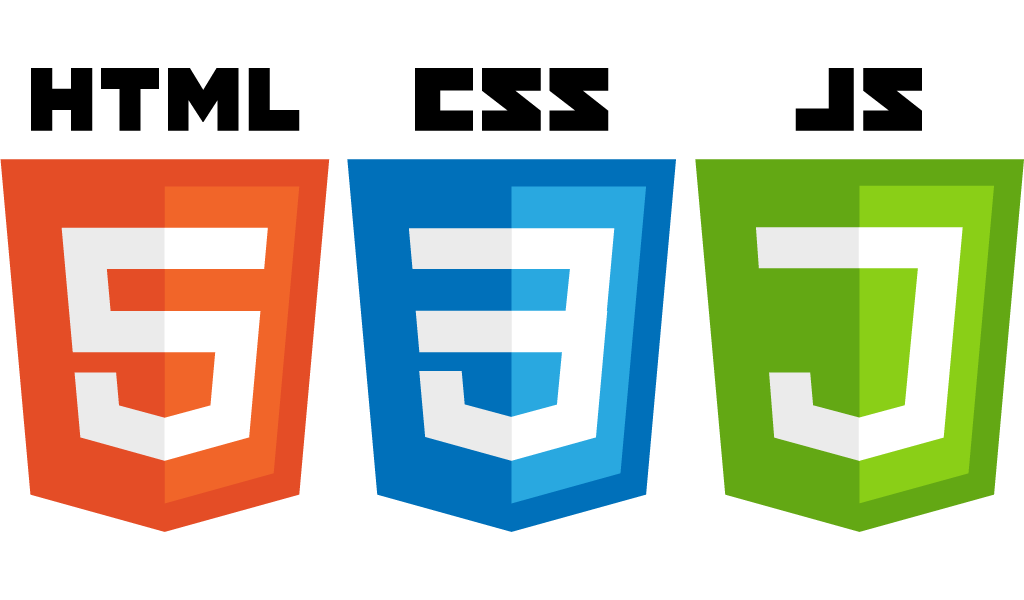HTML Bundler Plugin is the right way to bundle all resources with your HTML files



This is a modern plugin that does exactly what you want, automatically extracts JS, CSS, images, fonts
from their sources loaded directly in HTML using tags
and replaces the source filenames with output hashed version of the files.
The plugin enable to use an HTML file as entry-point in Webpack.
The purpose of this plugin is to make the developer's life much easier than it was using
html-webpack-plugin mini-css-extract-plugin and other plugins.
💡 Highlights:
- Define your HTML pages in Webpack entry.
- The HTML file is the entry-point for all source scripts and styles.
- Source scripts and styles can be loaded directly in HTML using
<script> and <link> tags. - All JS and CSS files will be extracted from their sources loaded in HTML tags.
- You can very easy inline JS, CSS, SVG, images w/o additional plugin and loaders.
This plugin works like the pug-plugin but the entry point is a HTML
file.
How to easily build a multipage website with this plugin, see the Webpack boilerplate used the html-bundler-webpack-plugin;
Simple usage example
Add the HTML files in the Webpack entry:
const HtmlBundlerPlugin = require('html-bundler-webpack-plugin');
module.exports = {
entry: {
index: './src/views/home/index.html',
},
plugins: [
new HtmlBundlerPlugin(),
],
module: {
rules: [
{
test: /.html/,
loader: HtmlBundlerPlugin.loader,
},
],
},
};
Add source scripts and styles directly to HTML using a relative path or Webpack alias:
<html>
<head>
<link href="./style.scss" rel="stylesheet">
<script src="./main.js" defer="defer"></script>
</head>
<body>
<h1>Hello World!</h1>
</body>
</html>
The generated HTML contains hashed output CSS and JS filenames:
<html>
<head>
<link href="/assets/css/style.05e4dd86.css" rel="stylesheet">
<script src="/assets/js/main.f4b855d8.js" defer="defer"></script>
</head>
<body>
<h1>Hello World!</h1>
</body>
</html>
Contents
- Install and Quick start
- Features
- Plugin options
- Loader options
- Recipes
Features
Just one HTML bundler plugin replaces the functionality of the plugins and loaders:
Install and Quick start
Install the html-bundler-webpack-plugin:
npm install html-bundler-webpack-plugin --save-dev
Install additional packages for styles:
npm install css-loader sass sass-loader --save-dev
Change your webpack.config.js according to the following minimal configuration:
const path = require('path');
const HtmlBundlerPlugin = require('html-bundler-webpack-plugin');
module.exports = {
output: {
path: path.join(__dirname, 'dist/'),
publicPath: '/',
},
entry: {
index: './src/views/home/index.html',
'pages/about': './src/views/about/index.html',
},
plugins: [
new HtmlBundlerPlugin({
js: {
filename: 'assets/js/[name].[contenthash:8].js',
},
css: {
filename: 'assets/css/[name].[contenthash:8].css',
},
}),
],
module: {
rules: [
{
test: /\.html$/,
loader: HtmlBundlerPlugin.loader,
},
{
test: /\.(css|sass|scss)$/,
use: ['css-loader', 'sass-loader'],
},
],
},
};
Plugin options
verbose
Type: boolean Default: false
Display information about extracted files.
test
Type: RegExp Default: /\.html$/
The test option allows то handel only those entry points that match their source filename.
For example, if you has *.html and *.hbs entry points, then you can set the option to match all needed files: test: /\.(html|hbs)$/.
outputPath
Type: string Default: webpack.options.output.path
The output directory for processed file. This directory can be relative by webpack.options.output.path or absolute.
filename
Type: string | Function Default: [name].html
The name of output file.
- If type is
string then following substitutions (see output.filename for chunk-level) are available in template string:
[id] The ID of the chunk.[name] Only filename without extension or path.[contenthash] The hash of the content.[contenthash:nn] The nn is the length of hashes (defaults to 20).
- If type is
Function then following arguments are available in the function:
@param {PathData} pathData has the useful properties (see the type PathData):
pathData.filename the full path to source filepathData.chunk.name the name of entry key
@param {AssetInfo} assetInfo Mostly this object is empty.@return {string} The name or template string of output file.
css
Type: Object
Default properties:
{
test: /\.(css|scss|sass|less|styl)$/,
verbose: false,
filename: '[name].css',
outputPath: null,
}
The filename property see by filename option.
The outputPath property see by outputPath option.
The option to extract CSS from a style source file loaded in the HTML tag:
<link href="./style.scss" rel="stylesheet">
Warning
Don't import source styles in JavaScript! Styles must be loaded directly in HTML.
The default CSS output filename is [name].css.
You can specify your own filename using webpack filename substitutions:
const HtmlBundlerPlugin = require('html-bundler-webpack-plugin');
module.exports = {
plugins: [
new HtmlBundlerPlugin({
css: {
filename: 'assets/css/[name].[contenthash:8].css',
},
}),
],
};
The [name] is the base filename of a loaded style.
For example, if source file is style.scss, then output filename will be assets/css/style.1234abcd.css.
If you want to have a different output filename, you can use the filename options as the function.
Warning
Don't use mini-css-extract-plugin or style-loader, they are not required more.
The html-bundler-webpack-plugin extracts CSS much faster than other plugins and resolves all asset URLs in CSS, therefore the resolve-url-loader is redundant too.
js
Type: Object
Default properties:
{
verbose: false,
filename: '[name].js',
outputPath: null,
}
The filename property see by filename option.
The outputPath property see by outputPath option.
The test property not exist because all JS files loaded in <script> tag are automatically detected.
The option to extract JS from a script source file loaded in the HTML tag:
<script src="./main.js"></script>
The default JS output filename is [name].js.
You can specify your own filename using webpack filename substitutions:
const HtmlBundlerPlugin = require('html-bundler-webpack-plugin');
module.exports = {
plugins: [
new HtmlBundlerPlugin({
js: {
filename: 'assets/js/[name].[contenthash:8].js',
},
}),
],
};
The [name] is the base filename script.
For example, if source file is main.js, then output filename will be assets/js/main.1234abcd.js.
If you want to have a different output filename, you can use the filename options as the function.
Loader options
preprocessor
Type:
type preprocessor = (
content: string,
loaderContext: LoaderContext
) => HTMLElement;
Default: undefined
The content argument is raw content of a file.
The loaderContext argument is an object contained useful properties, e.g.:
mode - the Webpack mode: production, development, nonerootContext - the path to Webpack contextresource - the template file
Complete API see by the Loader Context.
The preprocessor is called before handling of the content.
This function can be used to replace a placeholder with a variable or compile the content with a template engine, e.g. Handlebars.
For example, set variable in the template
index.html
<html>
<head>
<title>{{title}}</title>
</head>
<body>
<h1>Hello World!</h1>
</body>
</html>
Webpack config
const path = require('path');
const HtmlBundlerPlugin = require('html-bundler-webpack-plugin');
module.exports = {
output: {
path: path.join(__dirname, 'dist/'),
},
entry: {
index: './src/index.html',
},
plugins: [new HtmlBundlerPlugin()],
module: {
rules: [
{
test: /\.html$/,
loader: HtmlBundlerPlugin.loader,
options: {
preprocessor: (content, loaderContext) => content.replace('{{title}}', 'Homepage'),
},
},
],
},
};
Note
The preprocessor will be called for each entry file.
For multipage configuration, you can use the loaderContext.resource property to differentiate data for diverse pages.
See the usage example.
How to use source images in HTML
Add to Webpack config the rule:
module: {
rules: [
{
test: /\.(png|jpe?g|ico)/,
type: 'asset/resource',
generator: {
filename: 'assets/img/[name].[hash:8][ext]',
},
},
],
}
Add a source file using a relative path or Webpack alias in HTML:
<html>
<head>
<link href="./favicon.ico" rel="icon" />
</head>
<body>
<img src="./apple.png" srcset="./apple1.png 320w, ./apple2.png 640w" alt="apple">
<picture>
<source srcset="./fig1.jpg, ./fig2.jpg 320w, ./fig3.jpg 640w">
</picture>
</body>
</html>
The generated HTML contains hashed output images filenames:
<html>
<head>
<link href="/assets/img/favicon.05e4dd86.ico" rel="icon" />
</head>
<body>
<img src="/assets/img/apple.f4b855d8.png" srcset="/assets/img/apple1.855f4bd8.png 320w, /assets/img/apple2.d8f4b855.png 640w" alt="apple">
<picture>
<source srcset="/assets/img/fig1.605e4dd8.jpg, /assets/img/fig2.8605e4dd.jpg 320w, /assets/img/fig3.e4605dd8.jpg 640w">
</picture>
</body>
</html>
How to preload source fonts in HTML
Add to Webpack config the rule:
module: {
rules: [
{
test: /\.(eot|ttf|woff|woff2)/,
type: 'asset/resource',
generator: {
filename: 'assets/fonts/[name][ext]',
},
},
],
}
Add a source file using a relative path or Webpack alias in HTML:
<html>
<head>
<link href="./font1.woff2" rel="preload" as="font" type="font/woff2" />
<link href="./font2.woff2" rel="preload" as="font" type="font/woff2" />
</head>
<body>
<h1>Hello World!</h1>
</body>
</html>
The generated HTML contains output fonts filenames:
<html>
<head>
<link href="/assets/fonts/font1.woff2" rel="preload" as="font" type="font/woff2" />
<link href="/assets/fonts/font2.woff2" rel="preload" as="font" type="font/woff2" />
</head>
<body>
<h1>Hello World!</h1>
</body>
</html>
Note
You don't need a plugin to copy files from source directory to public.
How to inline CSS in HTML
For example, the style.scss:
$color: red;
h1 {
color: $color;
}
Add the ?inline query to the source filename which you want to inline:
<html>
<head>
<link href="./main.scss" rel="stylesheet" />
<link href="./style.scss?inline" rel="stylesheet" />
</head>
<body>
<h1>Hello World!</h1>
</body>
</html>
The generated HTML contains inline CSS already processed via Webpack:
<html>
<head>
<link href="/assets/css/main.05e4dd86.css" rel="stylesheet">
<style>
h1{color: red;}
</style>
</head>
<body>
<h1>Hello World!</h1>
</body>
</html>
Note
To enable source map in inline CSS set the Webpack option devtool.
How to inline JS in HTML
For example, the script.js:
console.log('Hello JS!');
Add the ?inline query to the source filename which you want to inline:
<html>
<head>
<script src="./main.js" defer="defer"></script>
<script src="./script.js?inline"></script>
</head>
<body>
<h1>Hello World!</h1>
</body>
</html>
The generated HTML contains inline JS already compiled via Webpack:
<html>
<head>
<script src="assets/js/main.992ba657.js" defer="defer"></script>
<script>
(()=>{"use strict";console.log("Hello JS!")})();
</script>
</head>
<body>
<h1>Hello World!</h1>
</body>
</html>
Note
If Webpack is started as serve or watch,
the inlined JS code will contain additional HMR code.
Don't worry it is ok, so works Webpack live reload.
To enable source map in inline JS set the Webpack option devtool.
How to inline SVG, PNG images in HTML
You can inline images in two ways:
- force inline image using
?inline query - auto inline by image size
Add to Webpack config the rule:
module: {
rules: [
{
test: /\.(png|jpe?g|svg|webp|ico)$/i,
oneOf: [
{
resourceQuery: /inline/,
type: 'asset/inline',
},
{
type: 'asset',
parser: {
dataUrlCondition: {
maxSize: 1024,
},
},
generator: {
filename: 'assets/img/[name].[hash:8][ext]',
},
},
],
},
],
}
How to use a template engine
For example, using the Handlebars templating engine, there is an
index.hbs
<html>
<head>
<title>{{title}}</title>
</head>
<body>
<h1>{{headline}}</h1>
<div>
<p>{{firstname}} {{lastname}}</p>
</div>
</body>
</html>
Add the preprocessor option to compile the content with Handlebars.
const path = require('path');
const HtmlBundlerPlugin = require('html-bundler-webpack-plugin');
const Handlebars = require('handlebars');
module.exports = {
output: {
path: path.join(__dirname, 'dist/'),
},
entry: {
index: './src/views/home/index.hbs',
},
plugins: [
new HtmlBundlerPlugin({
test: /\.hbs$/,
}),
],
module: {
rules: [
{
test: /\.hbs$/,
loader: HtmlBundlerPlugin.loader,
options: {
preprocessor: (content, loaderContext) =>
Handlebars.compile(content)({
title: 'My Title',
headline: 'Breaking Bad',
firstname: 'Walter',
lastname: 'Heisenberg',
}),
},
},
],
},
};
How to pass data into template
You can pass variables into template using a template engine, e.g. Handlebars.
See the usage example by How to use a template engine or How to pass different data in multipage configuration.
How to pass different data in multipage configuration
For example, you have several pages with variables:
one file has .html extension, first.html
<html>
<head>
<title>{{title}}</title>
<link href="./first.scss" rel="stylesheet">
<script src="./first.js" defer="defer"></script>
</head>
<body>
<h1>{{headline}}</h1>
<div>
<p>{{firstname}} {{lastname}}</p>
</div>
</body>
</html>
other file has .hbs extension, second.hbs
<html>
<head>
<title>{{title}}</title>
<link href="./second.scss" rel="stylesheet">
<script src="./second.js" defer="defer"></script>
</head>
<body>
<h1>Location</h1>
<div>
<p>{{city}}, {{state}}</p>
<img src="./map.png" alt="map" />
</div>
</body>
</html>
Webpack config for multipage
const path = require('path');
const HtmlBundlerPlugin = require('html-bundler-webpack-plugin');
const Handlebars = require('handlebars');
const findData = (sourceFile, data) => {
for (const [key, value] of Object.entries(data)) {
if (sourceFile.endsWith(key)) return value;
}
return {};
};
const entryData = {
'src/first.html': {
title: 'First page',
headline: 'Breaking Bad',
firstname: 'Walter',
lastname: 'Heisenberg',
},
'src/second.hbs': {
title: 'Second page',
city: 'Albuquerque',
state: 'New Mexico',
},
};
module.exports = {
output: {
path: path.join(__dirname, 'dist/'),
},
entry: {
first: './src/first.html',
'route/to/second': './src/second.hbs',
},
plugins: [
new HtmlBundlerPlugin({
test: /\.(html|hbs)$/,
js: {
filename: 'assets/js/[name].[contenthash:8].js',
},
css: {
filename: 'assets/css/[name].[contenthash:8].css',
},
}),
],
module: {
rules: [
{
test: /\.(html|hbs)/,
loader: HtmlBundlerPlugin.loader,
options: {
preprocessor: (content, { resource }) => {
const data = findData(resource, entryData);
return Handlebars.compile(content)(data);
},
},
},
{
test: /\.(png|svg|jpe?g|webp)$/i,
type: 'asset/resource',
generator: {
filename: 'assets/img/[name].[hash:8][ext]',
},
},
],
},
};
The generated dist/first.html
<html>
<head>
<title>First page</title>
<link href="/assets/css/first.05e4dd86.css" rel="stylesheet">
<script src="/assets/js/first.f4b855d8.js" defer="defer"></script>
</head>
<body>
<h1>Breaking Bad</h1>
<div>
<p>Walter Heisenberg</p>
</div>
</body>
</html>
The generated dist/route/to/second.html
<html>
<head>
<title>Second page</title>
<link href="/assets/css/second.d8605e4d.css" rel="stylesheet">
<script src="/assets/js/second.5d8f4b85.js" defer="defer"></script>
</head>
<body>
<h1>Location</h1>
<div>
<p>Albuquerque, New Mexico</p>
<img src="assets/img/map.697ef306.png" alt="map" />
</div>
</body>
</html>
HMR live reload
To enable live reload by changes any file add in the Webpack config the devServer option:
module.exports = {
devServer: {
static: {
directory: path.join(__dirname, 'dist'),
},
watchFiles: {
paths: ['src/**/*.*'],
options: {
usePolling: true,
},
},
},
};
Note
Live reload works only if in HTML used a JS file. This is specific of Webpack.
If your HTML has not a JS, then create one empty JS file, e.g. hmr.js and add it in the HTML:
<script src="./hmr.js"></script>
Also See
- ansis - The Node.js lib for ANSI color styling of text in terminal
- pug-loader The Pug loader for Webpack
- pug-plugin The Pug plugin for Webpack
License
ISC







